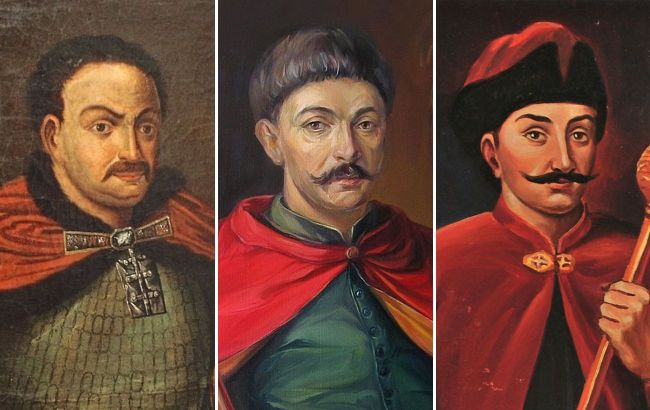Ukraine's past uncovered: Hetmans and dark intrigues left out of textbooks
 Dark tales of intrigue and conspiracy in the times of the hetmans (Collage: RBC-Ukraine)
Dark tales of intrigue and conspiracy in the times of the hetmans (Collage: RBC-Ukraine)
The hetmans of Ukraine in the 17th and 18th centuries did not only fight with sabers. They fell victim to conspiracies, poisonings, and intrigues that could easily serve as plots for a political thriller. The struggle for power at that time wasn't fought only on the battlefield; daggers and intrigue among the Cossack elite decided the fate of entire regions. These stories remind us that the fight for power has never been limited to official agreements, and even today, political intrigue remains an inseparable part of governance.
Conspiracy against Vyhovsky: When politics turned into an execution
After the signing of the Hadiach Treaty in 1658, which moved Ukraine closer to an alliance with Poland, a campaign of betrayal unfolded against Hetman Ivan Vyhovsky. He was accused of "plotting with the enemy," and in 1664, after he had already lost his mace, Vyhovsky was executed by the Poles on the order of Crown Hetman Sebastian Czarniecki.
"The execution of Vyhovsky was more of a political purge than a fair sentence."
Historians believe the trial merely masked a conspiracy among the Cossack elite to eliminate a political rival.
Briukhovetsky and Moscow's agents: who pushed him to his death?
Ivan Briukhovetsky, the first "Hetman of the Left Bank," who had sworn allegiance to Moscow, became a victim of his own political game. In 1668, during an uprising against Moscow's dominance, he was captured and killed by his own Cossacks.
"Bryukhovetsky was torn to pieces; it was a symbol of how allies became enemies."
According to one version, Moscow's own agents may have provoked his death to rid themselves of an unpredictable ally.
Samoylovych and Mazepa: Classic palace coup
Ivan Samoylovych, who tried to restore the unity of the Hetmanate, fell victim to a conspiracy among the Cossack elite that supported Ivan Mazepa. In 1687, he was ousted and accused of treason, even though there was no real evidence.
"This is a classic example of a palace coup: Samoylovych was exiled, and Mazepa ascended to power."
It was one of the most famous political coups of that era, when power shifted not through agreements but through deceit and betrayal.
Bloody intrigues of the 18th century: Poisonings, plots, betrayals
In the 18th century, political purges did not disappear. They changed form. Local conspiracies, poisonings, and betrayals continued within Cossack regiments.
Even Mazepa, who had survived numerous intrigues, eventually became the target of Moscow's smear campaign.
"He was called a 'Judas' and a 'traitor,' and after the Battle of Poltava, he was essentially declared an outlaw."
Contract killings also reached the church hierarchy. The mysterious deaths of bishops who opposed the centralization of the Kyiv Metropolia show that intrigue penetrated every sphere.
Political legacy of shadows
Conspiracy as a political tool was an inseparable part of state-building. Ukrainian hetmans lived under constant threat not only from foreign powers but from their own. The struggle for power and Ukraine's autonomy was not just about armies and treaties but also about cunning, deceit, and poison.
These stories demonstrate that Ukrainian history is not just about Cossack bravery, but also about the dark corners of political intrigue, which still serve as a reminder of the high price of power.
You may be interested in:
- How Ukrainian hetmans built their power through strategic marriages
- Why were Cossack sabers hung in Ukrainian homes
Sources: Encyclopedia of the History of Ukraine, Wikipedia, Ukrainian Institute of National Memory

